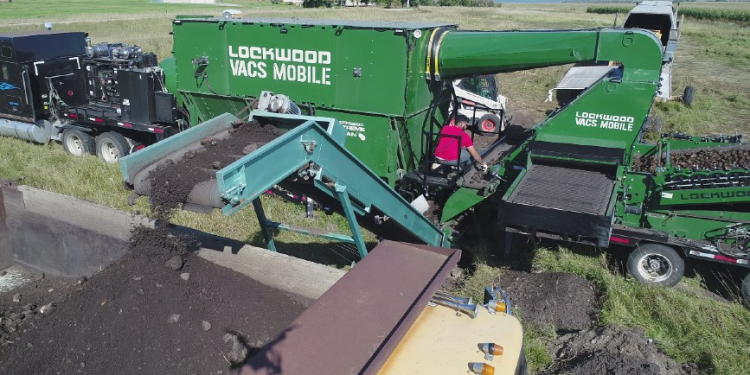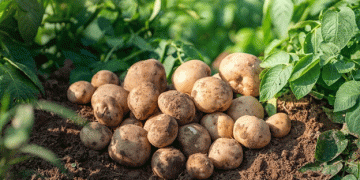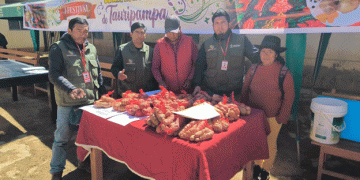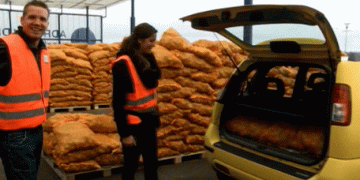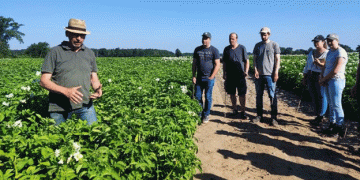Prepping your potatoes for storage depends on smart harvesting and effective cleaning. Engineers at Lockwood Manufacturing in the US say everyone knows digging too warm, too cold and too wet are all bad news for long-term storage, as is allowing your tubers to drop and bruise during harvest. However, they point out that putting your potatoes into storage in less than clean condition is just as costly in the long run. New cleaning options exist.
The Lockwood engineers provide a quick recap of what you need to know and a rundown on the new and notable for handling equipment (yard) cleaning tables.
Easiest to clean potatoes
Your easiest-to-clean potatoes come out of sandy, low-rock fields and need nothing more than star-rollers. Basic star-rollers do a great job at gentle agitation, allowing tubers to rub against each other to clean off lighter, sandier dirt. The challenge with star-rollers is vines and other lightweight debris rides on the top of the potatoes surfer-style. While an airhead (or, depending on conditions, a blower) can successfully manage this kind of debris, harvesting in heavier debris conditions may require a more aggressive table.
Star rollers
All companies offer multiple styles of star-rollers. For example, Lockwood star-tables come in two options: a five-finger full revolution table, best used for agitating and dropping out small debris and sizing out unwanted potatoes, and a 7/13-fingered table which excels in more challenging conditions.

Double-stone tables
Double-stone tables work well for fields with small, mostly flat rocks. Tubers come across a jump-chain to remove loose dirt and then onto a series of adjustable finger-rollers that allow flat rocks to drop through. A double-stone table is two tables, each containing two sets of 7/13 stars- and one set of stall-rollers.
Challenging conditions
For the most challenging, wet, rocky or heavy harvest conditions, farmers should opt for an aggressive, multi-directional table. Our version, the Extreme Clean table, consists of a series of spiral, fluted rollers, followed bysmooth-rollers. Product starts by going over the jump-chain, progresses over the forward-turning spirals, and is then held by the counter-rotating smooth-rollers. (In better harvest conditions, smooth-rollers can be adjusted to rotate forward.)
Rollers can be smooth steel or rubber-coated. Since rollers are movable, they can be adjusted to pull out smaller or larger debris, according to producer preference/harvest conditions. They can also be lifted to create a larger stall point for more intensive cleaning. While this can be a very good and necessary cleaning aid, be aware the higher a roller lifts, the more aggressive the agitation and removal of debris.

Interchangeable tables
Wouldn’t life be easy if you had exactly one type of harvest condition over all your acres, all the time? Unfortunately, that’s seldom reality, says the engineers at Lockwood. For that reason, Lockwood invented interchangeable tables: all hoses are quick-disconnect and just six bolts need to be removed to switch out a table. In under one hour, a farmer can go from successfully harvesting in the sandiest to the muddiest/rockiest of conditions.
The Lockwood specialists recommend virtually all farmers own two tables. Which ones depend on your conditions. If you have flat rocks, opt for a double-stone. If you’re trying to keep just one size of potato, a five-finger star is generally the best route. If you have any heavy ground, opt for something like the Extreme Clean, as it offers the most flexibility.
